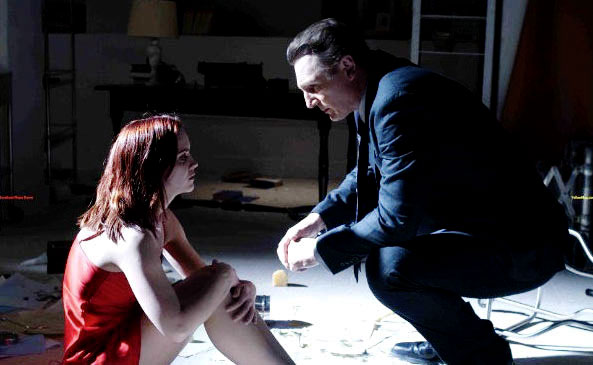
3.5 stars out of 5
After.Life, in theaters April 9, tackles the question of death with a unique approach. It is a movie about an elementary school teacher, Anna Taylor (Christina Ricci) who wakes up in the prep room of a funeral home. The funeral director, Eliot Deacon (Liam Neeson), tells her that she died in a car crash and is in a state of transition from life to death.
After a disastrous dinner where her boyfriend, Paul Coleman (Justin Long), tries to propose to her but she thinks he’s leaving her, she drives off in tears and crashes. Upon waking up in the funeral home, she denies the fact the she has died, despite a signed death certificate. Throughout the movie, Deacon works to convince her of her death and guide her into the afterlife.
Jack, one of Taylor’s students, tells Coleman that he saw Taylor in one of the funeral home windows. Coleman becomes convinced that something is not right after a couple of other small events and refuses to accept Taylor’s death.
The script, set and costumes are all very simple. It stands in perfect juxtaposition to the grandness of the question the movie poses. However, their approach to the cinematography was a little too clichéd. The focus on the color red was overdone and a lot of the traditionally indie scenes made the movie seem garish. The fact that pretty much half of the movie has Ricci naked seemed like a desperate approach to attract viewers in spite of a substantial story.
While the storyline is captivating, what really makes the movie is the acting. Between Ricci, Neeson and Long, the casting was impeccable. Although Long is generally known for his comedic roles, he fit the role of a fairly successful lawyer slowly working his way up the ranks. The role was easy to overact, but he found the perfect middle ground for his character, whom everyone thinks is insane when he tries to convince others that Taylor might not be dead.
For Ricci, the role was not a new one. She’s known for her dark characters, and this one is no different. Taylor grew up with a difficult, disabled mother and learned that love has a very high potential for pain early on. She can’t admit her love for Coleman until she’s close to accepting her death. One of the most poignant lines in the movie is when Deacon says to her, “You all say you’re scared of death but in fact you’re more scared of life.” He opens the prep room door to her and offers her a way out, but she’s paralyzed by a vision and never makes it through the door.
Neeson is perfect in his role as Deacon. It would have been easy to make the character cold and creepy and leave it at that. But Neeson manages to transform him into somebody that people recognize. He is a real person and despite his flaws, viewers are able to feel bad for him and understand a little bit of the position he finds himself in.
It is director Agnieska Wojtowicz-Vosloo’s first feature film. “People told me they were arguing with friends after they saw the movie,” said Vosloo in a press release. “Some people are convinced Anna was dead, others swear she was alive, and interestingly audiences were split 50/50. Both interpretations are equally plausible, but there are subtle clues that reveal the real answer. I think one’s interpretation of the movie is very telling of their own relationship to death and mortality.”
The movie never does answer whether or not Taylor was dead. But it brought up a very interesting question. If someone is not living their life, does that mean they might as well be dead? Taylor’s approach to life was lackluster. She had a job that she probably had at some point enjoyed or wanted and a boyfriend that loved her, but she was unhappy and withdrawn. When do the living stop living? At what point does the fact that they have no life left in them mean they are literally dead?
After.Life opens in theaters April 9.




